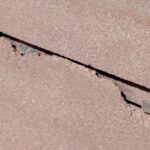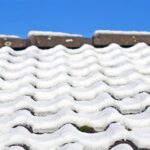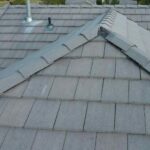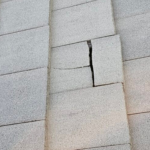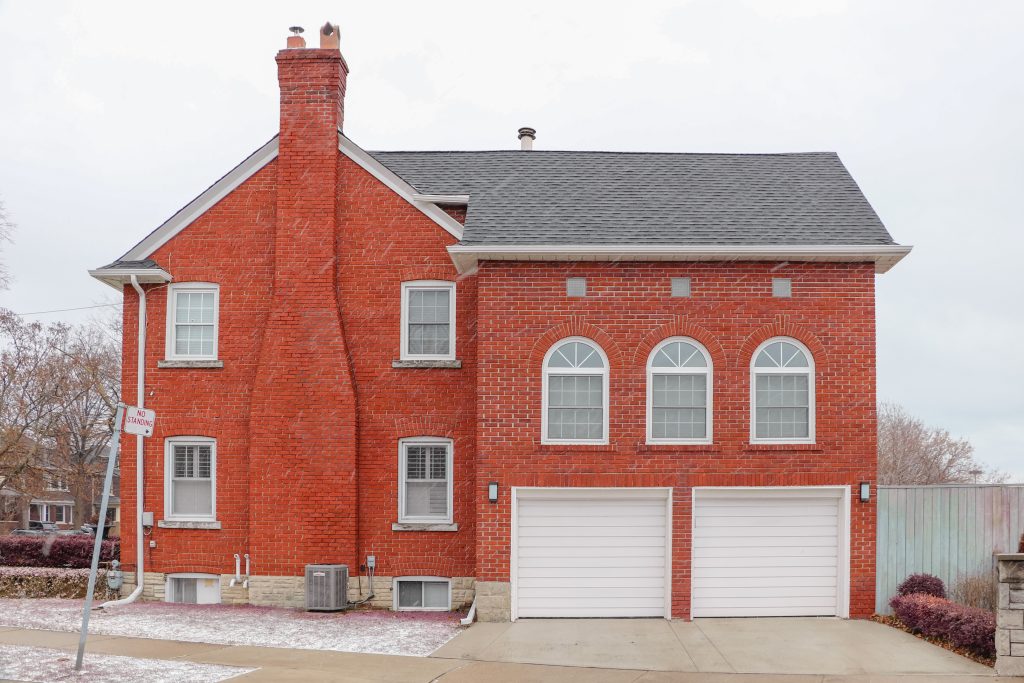
If you live in a hail-prone area, hail resistant shingles have a lot to offer for your home’s protection. Hailstorms can cause bruising, indentation, cracking, and even dislodging of your roof shingles, which leads to more property damage thus costly repairs and replacements. To ensure the best protection against hail damage, it’s worth investing in hail resistant roofing materials.
Listed in this article is everything you need to know about hail resistant shingles, including the benefits of Class 4 shingles, how shingles are tested and rated, hail damage and repair, and finding a reputable roofing contractor in Pine, Colorado for your roofing needs.
Introduction to Hail Resistant Shingles
Hail resistant shingles are designed to withstand the impact of hailstones. They are made with a reinforced fiberglass mat that provides extra strength and durability.
These shingles are typically made from asphalt, which is the most common roofing material in the United States. They come in a variety of styles and colors, so you can choose the best option that suits your home’s aesthetic.
Top-notch Roofing Contractors in Pine, Colorado
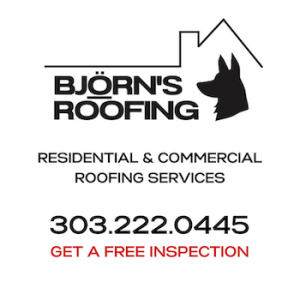
What are Class 4 Hail Resistant Shingles?
Asphalt shingles are rated on their impact resistance with the classifications ranging from Class 1 to Class 4, with Class 4 being the most hail resistant material. As compared to traditional shingles, hail resistant shingles offer these key advantages:
Superior Impact Resistance
Class 4 shingles are specifically designed and tested to withstand the impact of larger-sized hailstones. They offer a higher level of protection than lower-rated shingles and are less likely to be severely damaged during hailstorms, thus also reducing the risk of leaks, weakened seals, and further property damage.
Longer lifespan
Class 4 hail resistant shingles are made to be more durable, able to withstand small to giant hailstones and debris. They are designed to endure the impact forces associated with severe hailstorms, ensuring a longer lifespan for the roof.
Reduced Maintenance and Repair Costs
By installing hail resistant shingles, homeowners can potentially minimize the need for frequent repairs and replacements due to hail damage. These shingles are more resistant to cracks, splits, and other forms of damage caused by hail, leading to cost savings over time.
Versatile Protection
Class 4 shingles not only provide exceptional hail resistance but also offer protection against other weather elements such as strong winds, heavy rain, and UV rays. They can help safeguard the roof and the overall structure of the building from multiple environmental factors.
Increased Property Value
Installing Class 4 shingles can enhance the value of the property. Potential buyers are often attracted to homes with durable and resilient roofing systems that offer superior protection against hailstorms and other weather-related risks.
Potential Insurance Benefits
Many insurance companies recognize the superior protection offered by Class 4 hail-resistant shingles and may offer insurance premium discounts or incentives for their installation. Homeowners can potentially enjoy lower insurance premiums and improved coverage terms, providing financial advantages.
Peace of Mind
Homeowners can have peace of mind during hailstorms, knowing that their roofs are better equipped to withstand the impact. This confidence allows for a sense of security and reduces the stress associated with potential hail damage.
How Roof Shingles are Tested and Rated
Hail-resistant shingles are constructed using advanced materials and manufacturing techniques to provide superior impact resistance. They undergo rigorous testing to evaluate their performance under simulated hailstorm conditions. These shingles are rated based on their ability to withstand hail impact, typically categorized into different classes or levels.
While small hailstones similar to the size of peas and marbles aren’t that of a big threat, giant hailstones the size of grapefruit or larger can cause major damage. This is why the testing process involves shooting steel balls at the shingles at different speeds and angles to simulate the impact of hailstones in varying conditions.
The shingles are then rated based on their ability to withstand the impact without sustaining damage. The ratings range from Class 1 to Class 4, with Class 4 being the most hail-resistant roof material.
Factors to Consider When Choosing Hail Resistant Shingles
When selecting hail-resistant shingles for your roofing needs, it is important to consider several factors to ensure you choose the right option.
Firstly, you should consider the shingles’ impact resistance rating and choose a Class 4 rating for the best protection. Additionally, you should consider the shingles’ style and color to ensure that they match your home’s aesthetic. Moreover, you should consider the shingles’ durability and lifespan to ensure that you are making a long-term investment.
Consult with roofing specialists or contractors in Pine, Colorado that have knowledge of dealing with hail-resistant shingles. They can offer you helpful advice, evaluate your specific requirements, and suggest the best shingle options for your location and budget.
The Importance of Hail Protection in Pine, Colorado
Hailstorms are common in Colorado, and they can cause significant damage to your home’s roof. Hailstones can range from pea-sized to softball-sized, and they can cause several problems:
- Bruising: Hailstones can create bruises or indentations on the shingles. These bruises may not be immediately visible, but over time, they can weaken the shingle’s structure and lead to more serious problems.
- Granule Loss: Hail impact can cause the granules on the surface of shingles to dislodge or wear off. Granules protect the shingles from UV rays and provide waterproofing. When granules are lost, the shingles become more vulnerable to further damage and may deteriorate more quickly.
- Cracking or Splitting: Hailstones can cause shingles to crack or split, especially if they are older or in a more brittle condition. Cracked shingles can allow water to penetrate the roof and lead to leaks and other water-related issues.
- Shingle Dislodgement: In severe cases, hail can completely dislodge shingles from the roof. This creates gaps and exposes the underlying roof structure to potential water damage.
- Weakening of Seals: Hail impact can damage the seals between shingles, compromising their ability to provide a watertight barrier. This can result in leaks and water infiltration during rain or melting snow.
Hail damage weakens your roof’s structural integrity, which can compromise its ability to withstand future hailstorms. If left untreated, hail damage can lead to costly repairs and replacements, so it’s essential to address the issue as soon as possible and invest in sturdy, impact resistant roofing materials.
Hail Damage Roof Repair and Replacement Options
Begin by having a professional roofing contractor inspect your roof to assess the extent of the hail damage. They will provide a detailed report outlining the areas affected and the recommended course of action. If your roof has sustained hail damage, there are several repair and replacement options available:
- Repair: If the damage is relatively minor and localized, repair may be the most appropriate option. This involves fixing individual damaged shingles, repairing any leaks, and addressing specific areas of concern. Repairs can help extend the life of the roof and restore its functionality.
- Partial Roof Replacement: If the hail damage is more significant and affects a large portion of the roof, a partial roof replacement may be necessary. In this case, the damaged sections of the roof, including the shingles, underlayment, and possibly even the decking, are replaced while leaving the undamaged areas intact.
- Full Roof Replacement: If the hail damage is extensive and affects a significant portion of the roof or if the roof is already old or nearing the end of its lifespan, a full roof replacement may be the most practical solution. This involves completely removing the existing roof and installing a new one. It provides an opportunity to upgrade to hail-resistant shingles or other more durable roofing materials.
- Upgrading to stronger hail resistant materials: Consider upgrading to hail-resistant roofing materials, such as hail resistant shingles. These materials are specifically designed to withstand hail damage and offer enhanced durability and protection against future storms.
Finding a Trusted Roofing Contractor in Pine, Colorado
When choosing a roofing contractor in Pine, Colorado, it’s essential to find a reputable and experienced professional. You should look for a contractor who has experience working with Class 4 shingles and who can provide references and testimonials from previous clients. Additionally, you should ensure that the contractor is licensed and insured to protect yourself from any liability issues.
The Value of Investing in Class 4 Shingles
Hailstorms can cause significant damage to your home’s roof, which can lead to costly repairs and replacements. They provide better protection against hail damage, have a longer lifespan, and can improve your home’s energy efficiency.
Given the frequency and potential severity of hailstorms in Pine, Colorado, prioritizing hail protection measures is essential for property owners to minimize damage, ensure safety, and achieve long-term cost savings.
When choosing hail resistant shingles, you should consider their impact resistance rating, style and color, durability, and lifespan. Contact Bjorn’s Roofing today for Class 4 shingle installation, hail damage repairs, roofing replacements, and any of your roofing needs.
Latest Posts
Related: class 4 shingles cost, impact resistant roof discount, class 4 impact-resistant metal roof, class 3 vs class 4 shingles, class impact resistant shingles, hail resistant roofs, shingle roof repair
